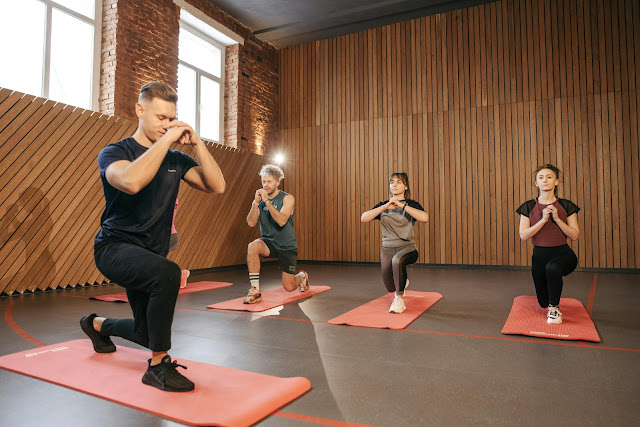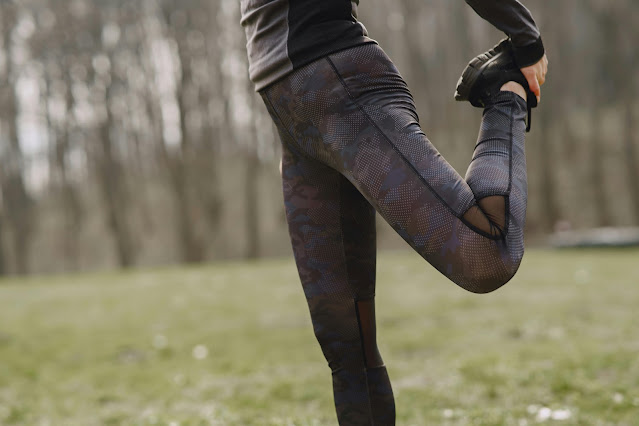These Six Exercises Helped Me Overcome Knee
Introduction:
My Journey From Injury to Empowerment
As a Pilates instructor, I’ve always prided myself on guiding others toward strength and flexibility. But three years ago, I faced a challenge that shook my confidence: a debilitating knee injury. What started out as a dull ache during runs turned into a sharp pain that forced me to stop running and limp. I was given a diagnosis of patellofemoral pain syndrome, also known as runner's knee, and I was told by doctors that continuing to run could make the damage worse. Determined to heal without abandoning my passion for running, I turned to my expertise in Pilates. I not only recovered, but I was able to get back to running pain-free by doing specific exercises, moving with awareness, and having patience. Today, I’m sharing the six Pilates-inspired exercises that transformed my knees—and my life.
For more information and articles visit Health, recipes and cooking methods.
Why Pilates Works for Knee Rehabilitation
Knee injuries often stem from muscle imbalances, weak stabilizers, or poor alignment—issues Pilates excels at addressing. Unlike high-impact workouts, Pilates emphasizes controlled, low-impact movements that strengthen the muscles supporting the knees (quads, hamstrings, glutes, and hips) while improving joint mobility.
Here’s how it helped me:
-Strengthened weak glutes that were contributing to knee misalignment.
- Improved proprioception (body awareness) to prevent compensatory movements.
- Enhanced core stability to reduce strain on the knees during runs.
The Six Exercises That Saved My Knee
1. Clamshells with Resistance Band
How to Do It: For more information and articles visit Health, recipes and cooking methods.
- With a resistance band looped around your thighs and knees bent at 90 degrees, lie on your side. Keep your hips stacked while elevating the top knee with your feet together. - Lower slowly. Repeat 15x per side.
Why It Works:
Clamshells focus on the gluteus medius, a crucial knee stabilizer. Weak glutes can cause the knees to collapse inward during running, leading to pain. This exercise corrected my alignment and reduced lateral knee strain.
My Experience:
Within weeks, I noticed less "knee wobble" during squats and lunges.
2. Single-Leg Glute Bridge
How to Perform It: - Lie on your back with knees bent and feet flat. Extend one leg straight.
- Press through the grounded foot to lift your hips, engaging the glutes and hamstrings.
- Hold for 3 seconds, lower slowly. Do 10 reps per side.
Why It Work:
This unilateral exercise addresses muscle imbalances between legs. Additionally, it strengthens the hamstrings and glutes of the posterior chain, which absorb impact during running.
My Experience:
My hamstrings felt stronger, and I stopped favoring my uninjured leg during runs.
3. Pilates Side-Kick Series
How to Do It:
- Lie on your side with one elbow in front of you. Lift both legs slightly off the ground.
- Swing the top leg forward and backward in small, controlled motions (like a pendulum).
- Do it 20 times on each side. Reasons Why It Works: In addition to improving knee stability, this dynamic movement strengthens the hip flexors and abductors. It also teaches controlled movement patterns.
My Experience:
I regained confidence in my ability to move my legs without compensating for knee pain.
4. Eccentric Step-Downs
How to Perform It:
- Stand on a stair or low step. Slowly lower one heel toward the floor (take 5 seconds).
- Use the non-working leg to return to the starting position.
- Perform 12 reps per leg.
Why It Works:
Eccentric (lengthening) contractions strengthen the quads and tendons, which are necessary for running to absorb shock.
My Experience:
This exercise was tough at first, but it drastically reduced my post-run knee swelling.
5. Rolling Foam for the IT Band's Release
How to Do It: for more information and articles visit Health, recipes and cooking methods.
- Lie on your side with a foam roller under your outer thigh (IT band).
- Roll slowly from hip to knee, pausing on tender spots for 20 seconds.
Why It Works:
Tight IT bands pull the knee out of alignment. My mobility was improved and my lateral knee tension was lessened with frequent foam rolling.
My Experience:
I incorporated this daily—it became my “magic wand” for preventing stiffness.
6. Wall Sit with Pilates Ball
How to Do It:
- Place a small Pilates ball between your knees. Lean against a wall and slide into a seated position (knees at 90 degrees).
- Squeeze the ball gently and hold for 30 seconds.
Why It Works:
This static hold activates the inner thighs (adductors) and teaches proper knee tracking. The ball prevents knees from collapsing inward.
My Experience:
My knee pain during downhill runs vanished after a month of consistent practice.
My Four-Week Rehabilitation Protocol
1. Weeks 1–2:
Perform exercises 3x/week, focusing on form. Swimming or biking should take the place of running.
2. Weeks 3–4:
Add 2x/week gentle runs (10–15 minutes) on soft surfaces. Continue exercises.
3. Week 5+:
Gradually increase running duration while monitoring knee feedback.
Key Lessons I Learned
- Listen to Your Body:
Pain is a signal, not a challenge to push through. For more information and articles visit Health, recipes and cooking methods.
-Consistency Over Intensity:
Small, daily efforts yield long-term results.
-Mindful Movement Matters:
Pilates taught me to engage the right muscles instead of “muscling through” workouts.
Conclusion:
Running Pain-Free Is Possible
A knee injury does not have to be fatal. I regained my ability to run and even increased my speed by retraining my movement patterns and strengthening the muscles surrounding the joint. These six exercises aren’t just for recovery; they’re now a non-negotiable part of my routine to keep my knees resilient.
Whether you’re a runner, a weekend warrior, or someone navigating knee pain, Pilates offers tools to rebuild strength from the inside out. Give these exercises time, patience, and dedication, and you might just find yourself lacing up your sneakers with joy again.
Final point: If you have an injury, you should always talk to a physical therapist or doctor before starting a new exercise routine.For more information and articles visit Health, recipes and cooking methods





No comments:
Post a Comment